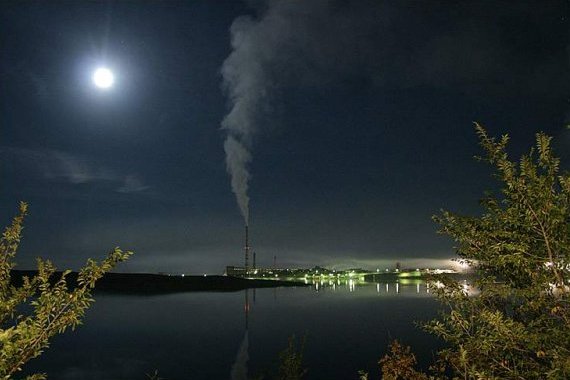
Copper Miners’ Strike in Kazakhstan Ends Swiftly, but Long-Term Problems Remain
Publication: Eurasia Daily Monitor Volume: 9 Issue: 89
By:

In Zhezkazgan, Kazakhstan, a labor dispute at Kazakhmys – Kazakhstan’s largest copper mining company – was swiftly resolved within three days after the management agreed to satisfy miners’ demands for higher pay and better working conditions. However, the long-term problems of the single-industry town of Zhezkazgan in the central Kazakhstan region of Karaganda, where copper deposits are depleting, will require more efforts to be resolved.
The strike started on May 5, when 98 miners refused to come out after a night shift at Annenskiy mine in Karaganda region, and about 100 miners from the morning shift refused to descend into the mine. Workers from the nearby Vostochnyy, Zhezkazgan and Yuzhnyy mines joined the strike organized by the miners of the Annenskiy mine. At the peak of the strike, 250 people protested underground and another 2,000 supported them on the surface, according to Kazakhmys CEO Eduard Ogay (Interfax-Kazakhstan, May 7; Tengrinews.kz, May 8).
Kazakhmys is the world’s 11th-largest copper producer, and is also engaged in the production of zinc, silver and gold as by-products The FTSE 100 company is listed on the London Stock Exchange. Currently, the state of Kazakhstan owns 26 percent of Kazakhmys, which operates 16 mines and two smelting and refining plants in the country. Annenskiy is one of six underground mines operated by Kazakhmys near the city of Zhezkazgan in central Kazakhstan – an area that produces about 70 percent of the company’s mined ore. For 2011, the company registered revenues of $3.563 billion – an increase of 10 percent over 2010 due to higher commodity prices – but posted virtually flat core profits. The unusually cold winter took a toll on the company’s results for the first quarter of 2012 due to disrupted transport and processing (Kazakmys Audited Results for 2011, kazakhmys.com, March 27; Reuters, April 26, May 5).
The copper miners’ strike took place less than five months after an oil workers’ labor dispute in western Kazakhstan descended into deadly clashes with the police leaving 16 killed and over 100 injured. As the trials over the Zhanaozen events continue in Aktau, the administrative center of Mangystau region, both the authorities and the public have become wary of labor disputes in single-industry towns with few other means of employment.
The strike in Zhezkazgan, however, was handled in a completely different way, following a model developed by the Kazakh authorities after the violence in Zhanaozen. Vowing that there would not be a Zhanaozen repetition in Zhezkazgan, the company’s first step was to take responsibility for the workers’ grievances. Tensions have been building at Kazakhmys mines since the winter when workers’ wages were reduced by 30 percent for failing to meet targets of ore production. Admitting that the company management failed to create conditions for fulfilling the plan, Kazakhmys CEO Eduard Ogay stated that the labor conflict could have been prevented. “There were management shortcomings, which we will assess. Such a situation should not be repeated again,” he told the local media after the mines resumed work on May 7 (Kazinform.kz, May 7; CA-News.org, May 8).
Second, the company management made sure that the strike would not be deemed illegal by the prosecutor’s office and none of the striking workers would be sanctioned. Eduard Ogay sent a letter to the prosecutor of the nearby city of Satpayev and the local authorities with a request to regard the event as a labor dispute, and not to take any actions against the workers. The prosecutor of Satpayev, E. Tashmetov, visited the site of the strike and called on people to hold a constructive dialogue (Interfax-Kazakhstan, May 6).
Third, the management involved representatives of the local government in the negotiations with striking miners, thus creating conditions for tripartite negotiations. In addition, the mayor of Satpayev, Batyrlan Akhmetov, personally addressed the protesting miners and urged the workers to calmly, peacefully and constructively discuss the labor conflict. He said that any illegal protests were not acceptable in the town (Interfax-Kazakhstan, May 6).
On May 7, the mines resumed work after Kazakhmys agreed to increase salaries across the board by 20 percent, and for certain professions by around 30 percent. The wage fund will be raised from 4.5 billion tenge ($30.4 million) to more than 6 billion tenge ($40.6 million). In addition, Kazakhmys stated that the process of establishing a trade union of corporation workers was under way (Interfax-Kazakhstan, May 5). It was not immediately clear whether the Kazakhmys trade union has started reorganizing after proving ineffective in addressing workers’ grievances earlier, or whether the reference was to the newly established branch of the Zhanartu trade union, closely related to the Kazakhstan Socialist Movement. Reportedly, in April, workers’ representatives from four enterprises of the Kazakhmys group – the Zhezkazgan power plant, the ore enrichment factory, the copper smelting factory and the Zhezkazgan regional enterprise KazMekhServis – decided to leave their official trade union and join the independent national Zhanartu trade union (Respublika, April 25).
According to Berik Zhagiparov, deputy of the Zhezkazgan branch of Zhanartu, wage increases will only temporarily provide relief to the problems of the region. The towns of Zhezkazgan and Satpaev were created around copper deposits, and their populations rely mainly on the copper mining and production industry. According to geologists, however, the ore deposits around Zhezkazgan are depleting and new mines have not been developed, except for one that was built seven years ago. Eduard Ogay has stated that Kazakhmys would leave the town in 15 years, which ultimately means the death of the city. The company has already moved its headquarters to Karaganda after Zhezkazgan lost its status as an administrative center a few years ago. These are the reasons for the very pessimistic outlook of the workers, who would like to see a change in the relationship of the corporation with its workers, said Zhagiparov, who is also the editor-in-chef of Zhezkazgan’s “Youth Gazette” (guljan.org, May 7).
A new study by the Norwegian Institute for International Affairs lists among the factors provoking social tensions in the single-industry towns of Zhezkazgan and Satpaev: workers’ fears of dismissal (it is impossible to find well-paid work outside Kazakhmys), high rates of injury and death at work (safety regulations are not adequately observed by either workers or the company), difficult working conditions, environmental problems, and low awareness among the population about company plans. One of the reasons for the difficult situation is the weak link between the corporation’s management and the local authorities on the one hand, and civil society on the other. The study recommends establishing dialogue between these parties. Public associations are encouraged to shift from confronting the company to engaging with it (nupi.no, 2012). However, dialogue alone without a comprehensive government development program for the region may only be a palliative measure.




